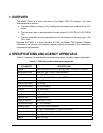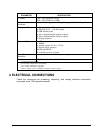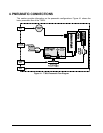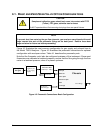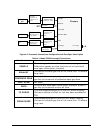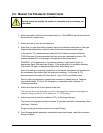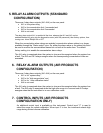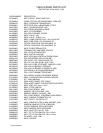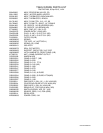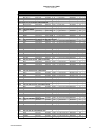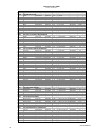
10
4.2. MAKING THE PNEUMATIC CONNECTIONS
CAUTION
Venting should be outside the shelter or immediate area surrounding the
instrument.
1. Attach a sample inlet line to the sample inlet port. The SAMPLE input line should not
be more than 2 meters long.
2. Attach sources of zero air and span gas
3. Span Gas is a gas specifically mixed to match the chemical composition of the type
of gas being measured at near full scale of the desired measurement range.
In the case of CO
2
measurements made with the Teledyne Instruments Model
T360U Analyzer it is recommended that you use a gas calibrated to have a CO
2
content equaling 80% of the range of compositions being measured.
EXAMPLE: If the application is to measure between 0 ppm and 50 ppm, an
appropriate Span Gas would be 40 ppm. If the application is to measure between
0 ppm and 100 ppm, an appropriate Span Gas would be 80 ppm.
Zero Air is similar in chemical composition to the earths atmosphere but scrubbed of
all components that might affect the analyzer’s readings. In the case of CO
2
measurements this means CO
2
less than 0.1 ppm of CO
2
and Water Vapor.
Zero Air can be purchased in pressurized canisters or created using a Teledyne
Instruments Model 701 Zero Air Generator in combination with a canister of
indicating soda-lime.
4. Attach an exhaust line to the exhaust outlet port.
The exhaust from the analyser and vent lines should be vented to atmospheric
pressure using maximum of 10 meters of ¼” PTFE tubing.
5. Attach a source of dried air scrubbed of CO
2
to the purge inlet port
The source of purge gas should be at least 10 psig and capable of maintaining a flow
of at least 1 liter/min.
Purge source gas pressure should not exceed 30 psig
6. Once the appropriate pneumatic connections have been made, check all pneumatic
fittings for leaks.






